- Clone
- LOM-14 (See other available formats)
- Regulatory Status
- RUO
- Other Names
- MGL, M-ASGP-BP, Macrophage galactose-type C-type lectin, CLEC10A, CD301a/CD301b
- Isotype
- Rat IgG2b, κ
- Ave. Rating
- Submit a Review

| Cat # | Size | Price | Quantity Check Availability | Save | ||
|---|---|---|---|---|---|---|
| 145711 | 25 µg | 118€ | ||||
| 145712 | 100 µg | 278€ | ||||
Mouse CD301, also known as macrophage galactose-type C-type lectin, has two homologue genes, CD301a (MGL1) and CD301b (MGL2), while there is only one MGL in human and rat. Mouse CD301a and CD301b are ~42 kD type II transmembrane glycoproteins containing a cytoplasmic domain, a transmembrane domain, a neck domain, and a carbohydrate recognition domain (CRD) within each molecule. CD301a is mainly expressed on a subset of macrophages and immature dendritic cells (DCs). CD301b is mainly found on conventional DCs. Although CD301a and CD301b share high amino acid sequence homology (92% for the intact sequence and 80% for the CRD), they display different carbohydrate specificities. CD301a was found to be highly specific for Lewis X and Lewis A structures, whereas CD301b, more similar to the human MGL, recognizes N-actetylgalactosamine (GalNAc) and galactose, including the O-linked Tn-antigen, TF-antigen, and core 2. So far, CD301a has been reported to be involved in recognition and endocytosis of glycoproteins with terminal Gal/GalNAc moieties. This contributes to defense against tumor cell metastasis, tissue remodeling, and clearance of apoptotic cells in embryos. CD301b is involved in the internalization of soluble polyacrylamide polymers (PAA) with α-GalNAc residues (GalNAc-PAA) in bone marrow derived dendritic cells.
Product DetailsProduct Details
- Verified Reactivity
- Mouse
- Antibody Type
- Monoclonal
- Host Species
- Rat
- Immunogen
- Purified and recombinant mouse MGL1 and MGL2
- Formulation
- Phosphate-buffered solution, pH 7.2, containing 0.09% sodium azide
- Preparation
- The antibody was purified by affinity chromatography and conjugated with APC/Fire™ 750 under optimal conditions.
- Concentration
- 0.2 mg/mL
- Storage & Handling
- The antibody solution should be stored undiluted between 2°C and 8°C, and protected from prolonged exposure to light. Do not freeze.
- Application
-
FC - Quality tested
- Recommended Usage
-
Each lot of this antibody is quality control tested by immunofluorescent staining with flow cytometric analysis. For flow cytometric staining, the suggested use of this reagent is ≤ 1.0 µg per million cells in 100 µL volume. It is recommended that the reagent be titrated for optimal performance for each application.
* APC/Fire™ 750 has a maximum excitation of 650 nm and a maximum emission of 774 nm. - Excitation Laser
-
Red Laser (633 nm)
- Application Notes
-
LOM-14 recognizes mouse CD301a and CD301b. Additional reported applications (for relevant formats) include: immunohistochemical staining of frozen tissue sections1-3 and immunoprecipitation4.
- Application References
-
- Denda-Nagai K, et al. 2010. J. Biol. Chem. 285:19193. (IHC)
- Sato K, et al. 2005. Blood 106:207. (IHC)
- Tsuiji M, et al. 2002. J. Biol. Chem. 277:28892. (IHC)
- Kimura T, et al. 1995. J. Biol. Chem. 270:16056. (IP)
- RRID
-
AB_2819893 (BioLegend Cat. No. 145711)
AB_2819894 (BioLegend Cat. No. 145712)
Antigen Details
- Structure
- 42 kD type II transmembrane glycoprotein, contain a cytoplasmic domain, a transmembrane domain, a neck domain, and a carbohydrate recognition domain (CRD)
- Distribution
-
Immature dendritic cells, a subset of macrophages
- Function
- Cell adhesion, cell-cell signaling, glycoprotein turnover, inflammation, tissue remodeling
- Interaction
- Carbohydrate determinants, GP envelope glycoprotein on Marburg and Ebola viruses
- Ligand/Receptor
- Glycans containing terminal GalNAc moieties
- Cell Type
- Dendritic cells, Macrophages
- Biology Area
- Cell Adhesion, Cell Biology, Immunology, Innate Immunity
- Molecular Family
- Adhesion Molecules, CD Molecules
- Antigen References
-
1. Denda-Nagai K, et al. 2010. J. Biol. Chem. 285:19193.
2. Westcott D, et al. 2009. J. Exp. Med. 206:3143.
3. Singh SK, et al. 2009. Mol. Immunol. 46:1240.
4. Sakakura M, et al. 2008. J. Biol. Chem. 283:33665.
5. Tsuiji M, et al. 2002. J. Biol. Chem. 277:28892. - Gene ID
- 17312 View all products for this Gene ID 216864 View all products for this Gene ID
- UniProt
- View information about CD301 on UniProt.org
Related FAQs
Other Formats
View All CD301 Reagents Request Custom Conjugation| Description | Clone | Applications |
|---|---|---|
| Purified anti-mouse CD301 (MGL1/MGL2) | LOM-14 | FC,IHC-F,IP |
| PE anti-mouse CD301 (MGL1/MGL2) | LOM-14 | FC |
| PE/Cyanine7 anti-mouse CD301 (MGL1/MGL2) | LOM-14 | FC |
| APC anti-mouse CD301 (MGL1/MGL2) | LOM-14 | FC |
| PerCP/Cyanine5.5 anti-mouse CD301 (MGL1/MGL2) | LOM-14 | FC |
| APC/Fire™ 750 anti-mouse CD301 (MGL1/MGL2) | LOM-14 | FC |
| PE/Dazzle™ 594 anti-mouse CD301 (MGL1/MGL2) | LOM-14 | FC |
Customers Also Purchased
Compare Data Across All Formats
This data display is provided for general comparisons between formats.
Your actual data may vary due to variations in samples, target cells, instruments and their settings, staining conditions, and other factors.
If you need assistance with selecting the best format contact our expert technical support team.
-
Purified anti-mouse CD301 (MGL1/MGL2)

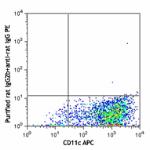
-
PE anti-mouse CD301 (MGL1/MGL2)
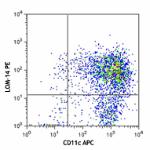
C57BL/6 bone marrow-derived dendritic cells were stained wit... 
-
PE/Cyanine7 anti-mouse CD301 (MGL1/MGL2)

C57BL/6 bone marrow-derived dendritic cells were stained wit... -
APC anti-mouse CD301 (MGL1/MGL2)
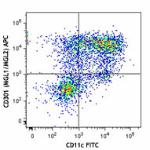
C57BL/6 bone marrow-derived dendritic cells were stained wit... 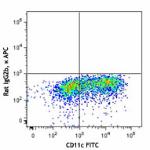
-
PerCP/Cyanine5.5 anti-mouse CD301 (MGL1/MGL2)

C57BL/6 bone marrow-derived dendritic cells were stained wit... -
APC/Fire™ 750 anti-mouse CD301 (MGL1/MGL2)

C57BL/6 bone marrow derived dendritic cells were stained wi... -
PE/Dazzle™ 594 anti-mouse CD301 (MGL1/MGL2)

C57BL/6 bone marrow derived dendritic cells were stained wi...

 Login / Register
Login / Register 













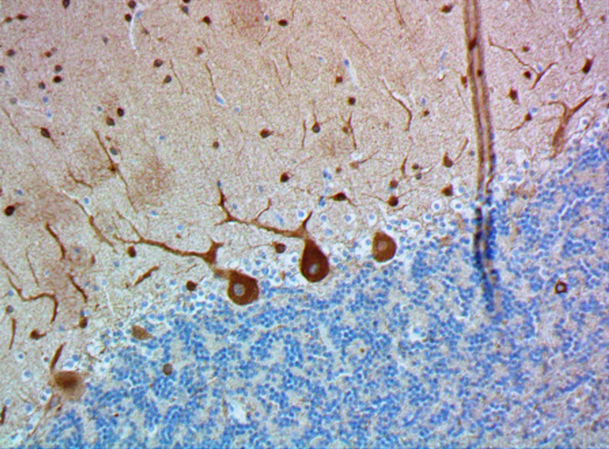
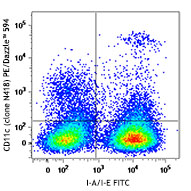
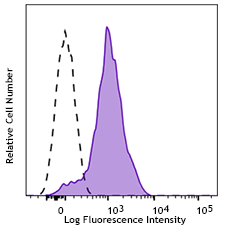






Follow Us